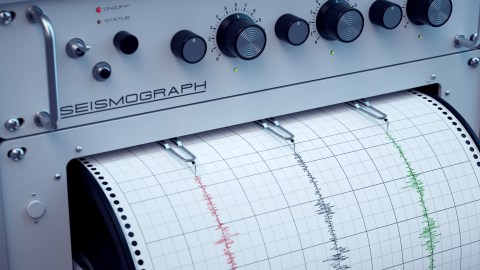
We’ve all seen the dreaded headlines:
“How many treasures have been stolen from the British Museum?”
“Grief and Anger Mingle After Devastating Brazil Museum Fire”
“How the Mona Lisa almost came to a watery end at the Metropolitan Museum of Art”
“New York’s Met Museum Director Resigns Amid Financial Troubles”
Reading these, does your heart rate inch up? Do you wonder if you or your museum could be next? Do you question whether you have a strong enough handle on the risks facing your institution?
If so, it may be time to consider engaging an internal auditor. Here’s why.
The Value of Internal Audit to Museums
Much like small cities, museums are complex organizations, with a variety of areas focused on research, protection, conservation, education, digital outreach, design, donor development, administration, and finance—just to name a few. They often have diverse revenue streams from ticket sales, retail shops, restaurant services, special events, donors, and large endowments. As such, the related risks are as vast as the range of staff and skills they employ, and the services they offer. And on top of that, the world around us is in a state of uncertainty and change like we have never experienced before, and yet the pace is only expected to exponentially increase into the future. How do leaders keep up?
In organizations with a robust internal audit function, leaders can sleep more soundly at night. They have dedicated employees inside the organization whose sole purpose is to reduce uncertainty and increase confidence in the achievement of organizational success. Through audits and advisory reviews, internal auditors provide the assurance the board and leadership needs to ensure they are on the right path for success. Internal auditors let leaders know both what is going well and what is cause for concern, suggesting solutions wherever issues are identified, thereby helping convert uncertainty into opportunity.
On the flip side, there is an enormous amount of uncertainty and risk to organizations without internal audit functions, and to their leaders and trustees. These organizations may have others who provide them assurance over specific things like financial reporting (external audit) or compliance with laws and regulations (legal). However, they are missing the internal function that is holistically able to bridge the gap from planning to the successful accomplishment of objectives, while overcoming obstacles that can hinder organizational success.
Reducing Uncertainty and Increasing Confidence
It doesn’t take a major scandal to put an organization’s future at risk. Poor governance and missed opportunities can also make it hard for a museum to stay relevant and sustain operations over the long term. But what if you had a trusted partner on the inside whose sole purpose was to help you govern at your best? A function who would provide you with independent, risk-based, and objective assurance, advice, insight, and foresight? This is the role of internal audit.
- Internal audit enhances decision-making and oversight. Management and staff are often deeply invested in their programs or processes, blurring their ability to see the big picture, identify areas for improvement, assess risks fairly, or report beyond the “good news.” Positioned on the inside, internal auditors have a view into all aspects of an organization but are independent from management and objective in their approach, providing leaders the information they need, without bias, to appropriately weigh risk and reward for informed decision-making. Internal auditors inform leadership when things are going well and when they are not. Knowing they have complete information, leaders can focus clearly on the areas of greatest priority or concern to the organization and develop solutions to the most complex of problems. Leaders know that sound decision-making is informed by sound evidence. Having trusted internal auditors provides a fresh perspective, trusted data, and an independent viewpoint when making consequential decisions.
- Internal audit enhances governance. Effective museum governance requires eyes and ears on the ground to independently verify that the museum is on track for success. Coal miners used to carry canaries into the tunnels as the birds would alert them to the presence of poisonous gases. Internal auditors serve as “canaries” for museum governance, raising red flags to protect the organization, employees, leadership, and the trustees from harm. Early warnings from auditors can help museum leaders avoid missed opportunities, financial liability, brand or reputational damage, and legal penalties. With quick attention and intervention to burgeoning problems, stakeholders can ensure that both they and their organization are protected and thriving. One area where this role can be particularly helpful is workplace culture. A healthy culture is critical to the achievement of organizational goals, improving engagement and productivity, and serving as a deterrent for fraud. However, it can also be difficult to objectively gauge from high up, especially since senior leadership is responsible. An auditor’s independent assessment of workplace culture can help avoid serious consequences for organizations and can assist governance bodies right the ship before it’s too late.
- Internal audit enhances the organization’s successful achievement of objectives. Internal auditors are focused on helping the organization in the achievement of organizational goals, and due to their unique positioning and role, they have deep insights into all areas of the organization. As such, they can provide a balanced perspective in critical strategy discussions, break down silos, improve communication, enhance project management and boost organizational alignment. Internal audit also plans audits and consulting engagements around those areas of greatest priority to the organization, ensuring that senior leadership and the board is aware of any issues that may stand in the way of strategic success.
- Internal audit enhances performance. So often, managers have little bandwidth for anything beyond the day-to-day. Internal auditors can dig deep with meaningful analysis around how things could be better, partner with management to identify inefficiencies, and champion improvements for enhanced performance. Furthermore, an internal auditor’s unique role provides the perfect vantage point for identifying best practices and opportunities for streamlined operations. Internal auditors serve as trusted partners with unique skillsets and abilities to advise on areas across the spectrum, identifying opportunities to optimize and innovate.
- Internal audit enhances risk management and control processes. Internal auditors perform audits of high-risk areas, ensuring that senior leadership and the board is aware of any issues in need of greater attention or better risk mitigation strategies. They may highlight that certain art storage areas are located below ground within a flood zone, and that moving the art to storage above ground will better mitigate the risk of loss or damage to the collection. They can also assist legal and compliance offices by providing assurance over whether certain laws, regulations, or internal policies are being complied with, and identifying areas of noncompliance, further protecting the organization from legal penalties or reputational harm. An additional benefit is that the mere existence of an internal audit function can serve as an important deterrent for fraud, waste, and abuse, as staff know there is a function in place focused on weeding it out.
Criteria for Success
Cooperation between an institution’s management and those responsible for assessing and managing risk is critical for success and relies on several essential conditions:
- Communication: Open, transparent, and structured communication must exist between management and the team assessing risk, ensuring that risk and opportunity discussions are part of everyday conversations.
- Support: Management should foster a culture that values accountability, transparency, and integrity, viewing assessments and findings as opportunities for growth.
- Independence and Objectivity: Those assessing risk should remain free from interference so that they may maintain the necessary independent and objective mental attitude to perform their role for the organization.
Think like an Internal Auditor
The most effective internal auditors have honed their ability to guide process owners, management, and executive leadership to objectively and freely contemplate the following questions on their own:
- What opportunities may we be missing?
- What could go wrong?
- Who else should I be collaborating with on this?
- What’s working and what’s not?
- What is standing in the way of success?
Consideration of these questions allows leaders to stay risk-informed, look to the horizon for signs of trouble or opportunity, and remain fluid at adapting to change. When these questions become part of day-to-day conversations, organizations are more likely to successfully fulfill their organizational mission and objectives. So, if you want to think like an auditor, the best place to begin is to consider these questions, encourage others to do the same, and keep the conversation going!







